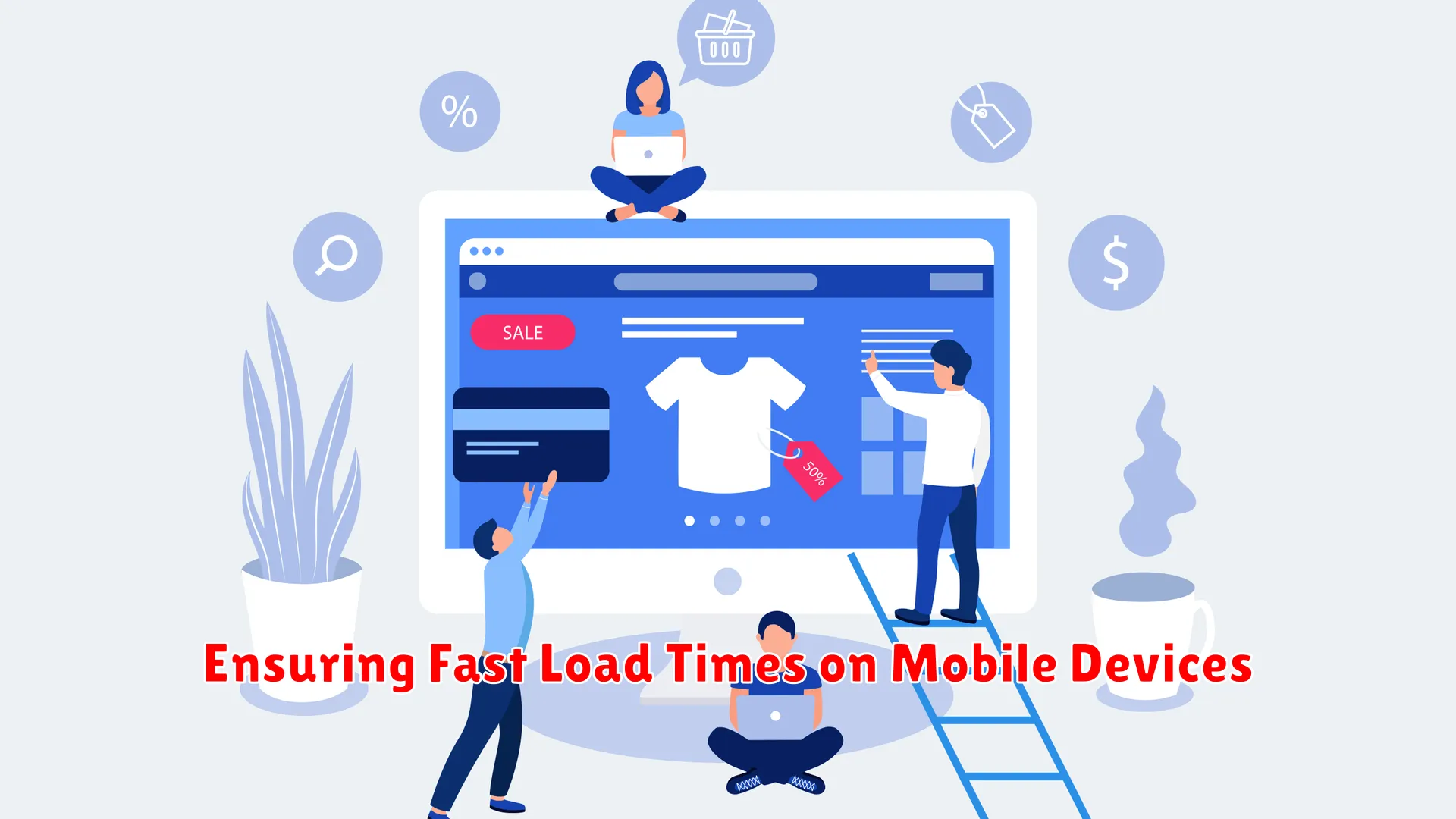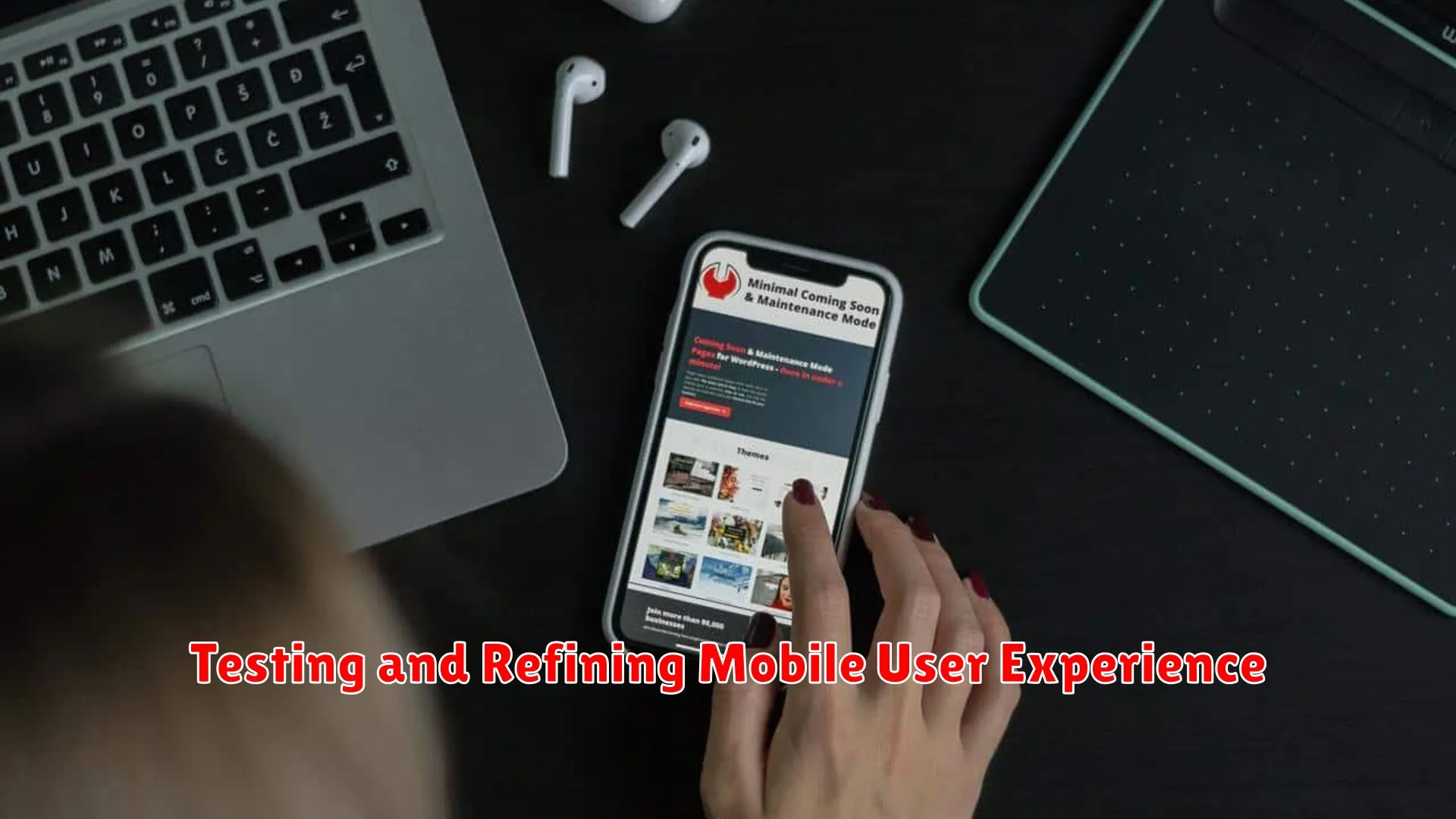Creating a successful e-commerce website requires optimizing for mobile users. Learn how to build a mobile-friendly online store that provides a seamless shopping experience for customers on the go.
The Necessity of Mobile Optimization

In today’s digital age, having a mobile-optimized e-commerce website is no longer just a nice-to-have feature; it has become a necessity for businesses looking to succeed online. With the increasing number of consumers using smartphones and tablets to browse and shop online, mobile optimization is crucial to providing a seamless and user-friendly experience.
Mobile optimization involves designing and developing your website to be responsive and user-friendly on various mobile devices. This includes ensuring that your site loads quickly, is easy to navigate with a touch screen, and adapts to different screen sizes. A mobile-optimized website enhances user experience, which can lead to increased engagement, higher conversion rates, and ultimately, improved sales.
Moreover, mobile optimization is not only important for user experience but also for search engine rankings. Search engines like Google prioritize mobile-friendly websites in their search results, meaning that having a mobile-optimized site can improve your visibility and organic traffic.
By focusing on mobile optimization for your e-commerce website, you can stay ahead of the competition, reach a wider audience, and capitalize on the growing trend of mobile shopping. Investing in mobile optimization is not just about keeping up with technology; it’s about meeting the evolving needs and preferences of your customers in a mobile-first world.
Key Elements of a Mobile-Friendly Website

Building a mobile-optimized e-commerce website requires attention to several key elements to ensure a seamless user experience and drive conversions. Here are essential components to consider:
Responsive Design
A critical aspect of a mobile-friendly website is responsive design. This means the website layout adjusts according to the user’s device screen size, providing optimal viewing experience on both smartphones and tablets.
Fast Loading Speed
Mobile users expect quick loading times. Implementing image optimization, minimizing HTTP requests, and leveraging browser caching can help improve loading speed, keeping users engaged and reducing bounce rates.
Streamlined navigation is key to enhancing user experience. Clear menu structures, clickable buttons, and intuitive search functionality make it easier for mobile users to find products and move through the website efficiently.
Mobile-Friendly Content
Optimizing content for mobile devices is crucial. Use concise and impactful product descriptions, high-quality images, and easy-to-read fonts to engage users on smaller screens and encourage conversions.
Optimized Checkout Process
Make the checkout process user-friendly on mobile devices. Simplify form fields, offer guest checkout options, and provide secure payment gateways to streamline the purchasing journey and reduce cart abandonment rates.

In the world of e-commerce, creating a seamless user experience on mobile devices is paramount for the success of your online store. With the increasing popularity of smartphones and tablets, designing for touchscreen navigation is a crucial aspect of building a mobile-optimized e-commerce website.
When designing for touchscreen navigation, it’s essential to prioritize user-friendly interfaces that are easy to navigate with a simple touch. Here are some key considerations:
- Large Touch Targets: Ensure that buttons and links are large enough to be easily tapped with a finger, reducing the chance of accidental clicks.
- Intuitive Gestures: Incorporate familiar gestures like swiping, pinching, and tapping to provide a seamless browsing experience.
- Responsive Design: Utilize responsive design principles to adapt your e-commerce site to different screen sizes and orientations.
- Minimize Typing: Simplify the checkout process by minimizing the need for manual text entry, as typing on a touchscreen can be cumbersome.
By designing for touchscreen navigation and focusing on user experience, you can enhance engagement, improve conversions, and ultimately drive the success of your mobile-optimized e-commerce website.
Ensuring Fast Load Times on Mobile Devices

In building a mobile-optimized e-commerce website, one of the key priorities is ensuring fast load times on mobile devices. Mobile users expect websites to load quickly and efficiently, as slow loading times can lead to high bounce rates and poor user experience.
Optimizing images: Compressing images and using the appropriate file formats can help reduce the file size without compromising quality. This can significantly improve load times on mobile devices.
Minimizing HTTP requests: Each element on a webpage requires an HTTP request, so minimizing the number of elements can help streamline the loading process. Combine CSS and Javascript files, and reduce the number of plugins used on the site.
Implementing lazy loading: Lazy loading delays the loading of non-essential elements, such as images below the fold, until the user scrolls to view them. This can speed up the initial page load time and improve the overall user experience.
Utilizing browser caching: Setting up browser caching allows certain elements of the website to be stored locally on a user’s device, reducing the need to re-download them with each visit. This can greatly improve load times for returning visitors.
Testing and optimizing: Regular testing and performance optimization are crucial in maintaining fast load times on mobile devices. Use tools like Google PageSpeed Insights or GTmetrix to identify areas for improvement and make necessary adjustments.
Testing and Refining Mobile User Experience

When building a mobile-optimized e-commerce website, one of the crucial elements to focus on is testing and refining the mobile user experience. A seamless and user-friendly mobile experience is essential to drive engagement and conversions on your e-commerce platform.
Testing the mobile user experience involves systematically evaluating how users interact with your website on different mobile devices and screen sizes. By conducting usability tests, A/B testing, and gathering feedback from real users, you can identify areas for improvement and make data-driven decisions to enhance the overall mobile experience.
Refining the mobile user experience requires continuous optimization based on user behavior analysis and feedback. This process involves tweaking user interface elements, simplifying navigation, improving page load speed, and ensuring compatibility across various mobile browsers to provide a seamless shopping experience for mobile users.
By prioritizing testing and refining the mobile user experience, e-commerce businesses can create a mobile-optimized website that caters to the needs and preferences of mobile shoppers, ultimately leading to increased conversions and customer satisfaction.
Conclusion
In conclusion, creating a mobile-optimized e-commerce website is essential for attracting and engaging customers in the digital era, enhancing user experience, and increasing sales potential.

